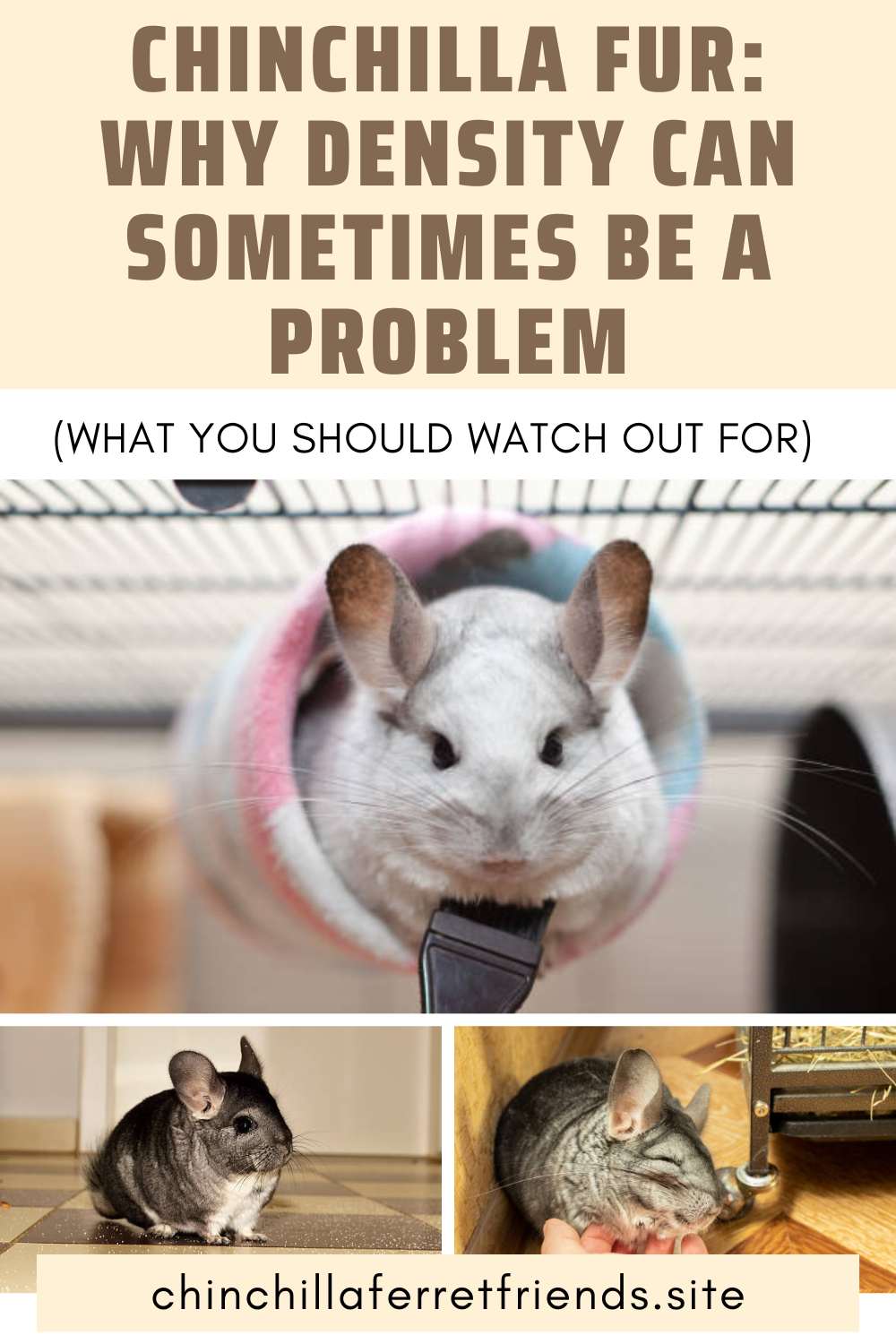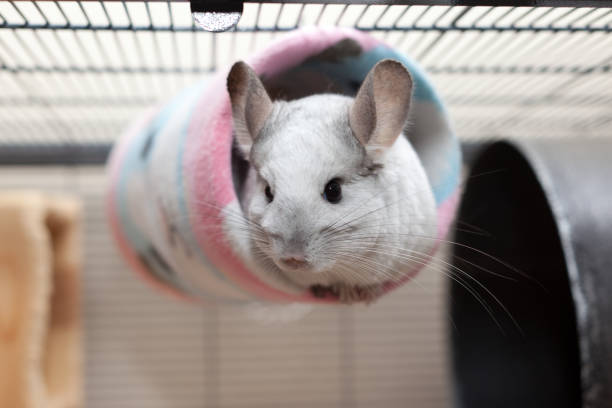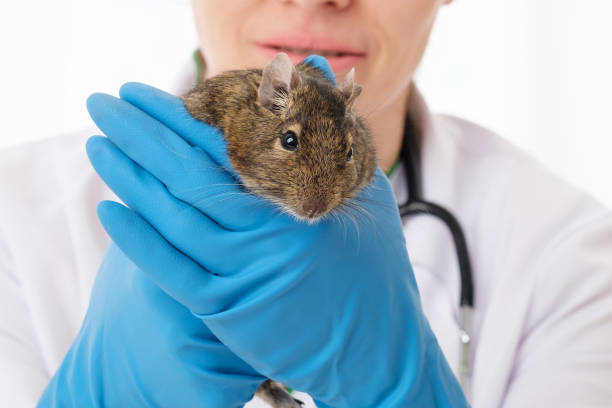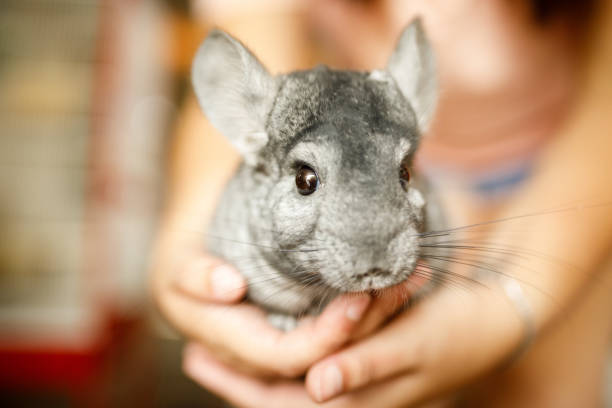Chinchilla Fur: Why Density Can Sometimes Be a Problem
This post contains affiliate links. This means I will make a commission at no extra cost to you should you click through and make a purchase. Read the full disclosure here.
Chinchillas are famous for their ridiculously soft, plush coats—but that dreamy fluff? It’s not just for looks. With more than 80 hairs per follicle (compared to a human’s one), chinchilla fur is the densest of any land mammal. While it makes them incredibly soft, it also comes with some very real risks if you’re not careful. That ultra-thick fur needs extra care, or it can cause serious health problems.
Let’s break down what dense fur really means for your chinchilla—and what you need to do to keep them comfy, clean, and healthy.
Step-by-Step Guide: Chinchilla Fur Density — Why It Matters, and What to Watch For

Step 1: Understand Just How Dense Chinchilla Fur Is
Chinchillas can have up to 60–80 hairs per follicle—that’s more than 20,000 hairs per square centimeter. That dense coat evolved to keep them warm in the cold Andes Mountains, but in your home, it can cause overheating, matting, and fungal infections if not properly managed.
💡 Bonus fact: Their fur is so dense that parasites like fleas and mites can’t even live in it. Cool, right?
Step 2: Know the Risks of Super Dense Fur
While their thick fur feels like a dream, it also makes chinchillas extra sensitive to heat and moisture. Common issues include:
- Overheating (especially above 75°F / 24°C)
- Fur matting or clumping
- Fur fungus (from trapped moisture)
- Skin irritation or sores under the fur
These issues are preventable—but only if you’re aware of the risks and stay on top of their care routine.
Step 3: Never Bathe Your Chinchilla in Water
This one’s crucial: Never, ever give your chinchilla a water bath. Their fur is so dense that it traps water and won’t dry properly, leading to hypothermia, skin infections, and fur rot.
Instead, let them take regular dust baths (2–4 times per week) using chinchilla-safe volcanic dust. This helps:
- Absorb oil and moisture
- Keep their fur clean and fluffy
- Prevent matting and fungal growth
💡 Pro tip: If your chinchilla has very dense fur, you may need to offer dust baths more frequently.
Step 4: Watch for Signs of Fur Issues
Dense fur can hide problems under the surface, so you’ll want to gently check your chinchilla during routine handling. Look and feel for:
- Lumps or clumps in the fur
- Bald spots or thinning areas
- Redness or flaking near the skin
- Foul odors (a possible sign of infection)
Run your fingers gently through the fur and observe any changes in texture or smell. If anything feels off, it’s time to investigate further.
Step 5: Keep Their Environment Cool and Dry
Overheating is a major risk for chinchillas, especially those with ultra-dense coats. To avoid heat stress:
- Keep their room between 60–70°F (16–21°C)
- Avoid direct sunlight or warm windows
- Use AC or fans during warmer months
- Offer ceramic cooling tiles or frozen water bottles wrapped in cloth
💡 Chinchillas cannot sweat or pant to cool off—so it’s on us to help them regulate temperature.
Step 6: Grooming Isn’t Just for Looks
While chinchillas generally groom themselves, some may need occasional help—especially if they’re older, long-haired, or extra fluffy. Use a metal grooming comb to gently remove:
- Loose fur
- Small mats
- Shedding during seasonal changes
Always be gentle. Never tug or pull hard—if you’re not sure, ask an exotic vet or chinchilla groomer for guidance.
Step 7: Monitor During Shedding Season
Chinchillas do shed, and it can be heavier in spring or fall. During this time:
- You may notice more loose fur in the cage
- Your chin might look patchy or uneven for a bit
- Brushing or combing may help ease the process
Watch closely for fur slip (a defense mechanism where they release fur when stressed or grabbed). If it happens too often, it may mean your chin is feeling unsafe or being handled too roughly.
Step 8: Know When to Call the Vet
If you notice any of the following, it’s time to consult an exotic vet:
- Persistent bald patches
- Open sores under the fur
- Swelling or pus-like discharge
- Excessive scratching or biting
These could be signs of infection, allergies, or underlying health issues that dense fur can hide.
Final Thoughts
Chinchilla fur is beautiful—but it’s not low-maintenance. That luxurious fluff comes with real responsibility. By understanding how dense their coats are and adjusting their care accordingly, you’ll keep your chinchilla happy, healthy, and looking like the plush cloud they were born to be.













